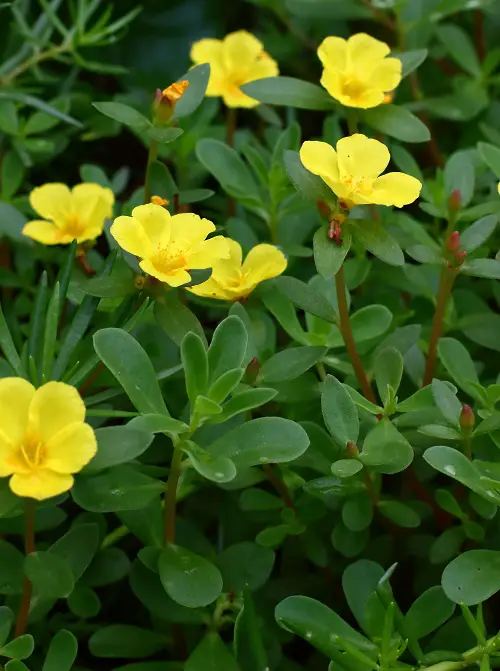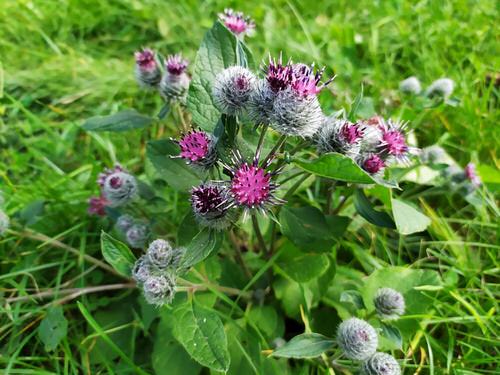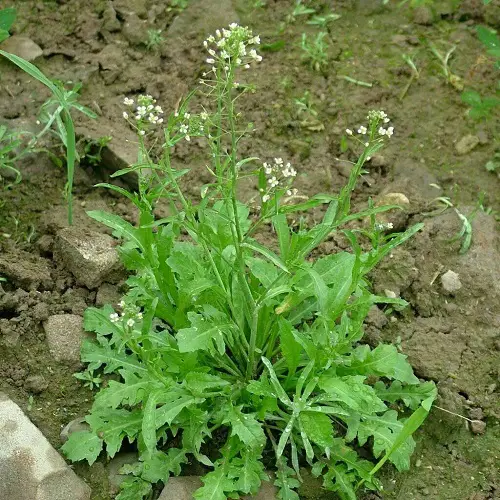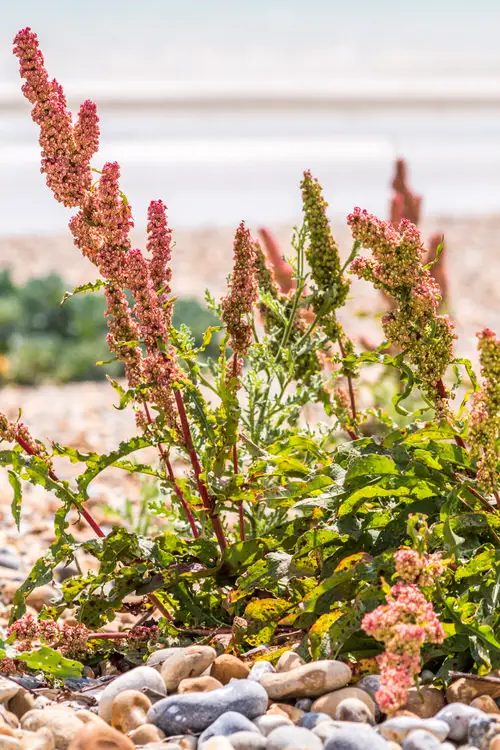Before you start to remove weeds from your garden – Stop! Learn about the Best Edible Weeds you didn’t know you could eat, first!
Do you know that many tasty and healthy edible plants can be found among the common weeds? Wild Edible Weeds can turn an ordinary cuisine into an exquisite dish. They also have many medicinal properties! Let’s have a look at them!
Check out our article on beneficial weeds in a garden here
Which Parts of Edible Weeds are Best to Eat?
The nutritional value of the plants depends on the vegetation period, so you should find out what is the best time to begin harvesting. For some weeds, flowers are harvested when they are still in buds and for others, the best time is immediately after development.
Depending on the species, you can cut the whole inflorescence, pluck individual flowers or just tear the petals.
Leaves of these Best Edible Weeds are tastiest and healthiest when they are young and tender, although they are not suitable for long-term storage. Roots should be harvested when the plant is dormant, in the spring or autumn.
Find out the best smokable plants that are not weeds here
Best Edible Weeds
1. Wild Amaranth

Botanical Name: Amaranthus viridis
Also known as “Pigweed”, amaranth leaves are treated as green leafy vegetables like spinach. The seeds of wild amaranth are edible too and can be roasted. They are a good source of free protein.
The young leaves of pigweed are soft and mild in taste and can also be used in salads or teas and the older leaves can be cooked like spinach. It contains proteins, vitamins, and minerals.
Note: This plant can be toxic to livestock animals due to the presence of nitrates in the leaves.
Learn about the best Asian greens for containers here
2. Queen Anne’s Lace

Botanical Name: Daucus carota
The wild carrot is almost identical to the highly poisonous hemlock. So be very careful that you don’t confuse yourself. There are many ways to identify wild carrots, but one important identifier of wild carrots is the smell, it smells like a carrot.
Like carrots, their roots are also edible when young (first year) but can become woody if not harvested on time. Its flower heads are edible too and can be eaten raw or cooked.
3. Lamb’s Quarters

Botanical Name: Chenopodium album
Lamb’s quarter leaves tend to look dusty and have a white powdery coating on them. Its tender leaves are great in salads and can be used as a substitute for other leafy vegetables.
Its flowers and seeds are also edible that taste like quinoa. However, its seeds contain toxic called Saponins in meager amounts and should not be consumed in excess. Lamb’s quarters contain some oxalic acid therefore when eating this raw, small quantities are recommended.
However, its seeds contain toxic called Saponins in meager amounts and should not be consumed in excess.
Note: This plant can be toxic to livestock animals due to the presence of nitrates in the leaves.
4. Comfrey

Botanical Name: Symphytum
Comfrey is a member of the borage family. Although not very aromatic, this herb is known for its medicinal properties and high protein content.
Its roots and leaves are also used to treat wounds because they contain allantoin, a substance that helps new skin cells grow to heal the wound quickly.
For cooking, only use young leaves as older leaves grow hard hairs. Apart from that, comfrey can also be used as garden fertilizer and mulch.
5. Winter Cress

Botanical Name: Barbarea
The Winter Cress is available at the time in winter when most of the plants don’t even grow. It belongs to the mustard family and is considered a weed. However, it is a rich source of Vitamin C.
The leaves are bitter but best in taste before the plant starts to flower while they are still young and tender. At this stage, they can be added to salads like rockets. It can also be used as a vegetable like spinach.
Look at the best edible groundcovers here
6. Common Mallow

Botanical Name: Malva
Common mallow has many medicinal and edible uses and can be easily found growing wild in most places. All parts of this plant are edible.
The leaves, flowers, fruits, and seeds can be eaten, whether raw in salads or cooked, and like many other leafy greens, usually more tender and tasty when they are smaller and less mature.
It has a mild flavor, although the plant is rich in vitamins A, B, and C, along with calcium, magnesium, and potassium.
7. Purslane

Botanical Name: Portulaca oleracea
Common Purslane is a healthy edible weed from the moss rose family. You might be surprised but in China and India and in many other countries it is cultivated popularly.
It can be a great addition to a salad, soups, or stews. It has a crunchy texture and leaves and stems can be eaten raw or cooked to add a spicy flavor to any dish.
Learn about growing purslane in containers here
8. Chickweed

Botanical Name: Stellaria media
Chickweed’s stems, leaves, and flowers are all edible. This delicious weed has a mild, refreshing flavor. The leaves and stems can be added to salads like lettuces or cooked as greens. It is loaded with nutritious elements and has many medicinal uses too.
9. Plantain

Botanical Name: Plantago
The plantain is found in meadows, pastures, roadsides, or in neglected sites. It has a mushroom-like aroma. Plantain can be used in the preparation of soups, salads, or as a vegetable. The juice of crushed leaves helps against itching.
10. Nettle

Botanical Name: Urtica dioica
The stinging nettle is one of the most easily identifiable weeds and invasive too. But do you know it is highly regarded for its protein content?
It has 16 free amino acids. Nettle is also rich in vitamin A and C, iron, magnesium, calcium, and antioxidants. The young leaves are cooked. Its soup is also popular in many countries.
However, when dealing with nettle, make sure you wear gloves as its hairs can cause skin irritation or dermatitis.
11. Dandelion

Botanical Name: Taraxacum
Dandelion has a very bad reputation as a weed, especially among those who like to keep a clean and green lawn.
This plant is a pollinator’s favorite, and also this plant is edible, from the roots to the flowers. The dandelion leaves can be harvested too at any time in the growing season.
Check out the flowers that start with ‘D’ here
12. Common Burdock

Botanical Name: Arctium minus
This biennial weed is very common along the ditches but also in the mountains at low altitudes. Before cooking, the stems must be peeled and roots scrubbed in order to remove the bitter rind.
Immature flower stalks may also be harvested in late spring before flowers appear; their taste is similar to that of artichoke. The Japanese have been known to eat the leaves when a plant is young and leaves are soft.
13. Clover

Botanical Name: Trifolium
This common herb goes unnoticed on the lawn but it is very important for bees and bumblebees. The flowers and leaves of clover can be used to add variety to meals
A few raw clover leaves can be chopped in salads or sauteed and added to dishes for a green accent. Flowers can be eaten raw or cooked, including dried for tea.
Want to grow white clover? Click here
14. Watercress
Botanical Name: Nasturtium officinale
Watercress is rich in minerals, beta-carotene, and vitamin C. It is rich in nutrients. This perennial plant has hollow stems and small heart-shaped leaves.
The peppery flavor of watercress is sharp but not bitter. This water-loving plant can be found growing near creeks and ponds or nearby to other water bodies. There are many delicious watercress recipes you can easily find on the web.
15. Shepherd’s Purse

Botanical Name: Capsella bursa-pastoris
This plant is related to mustard family, it looks like dandelion and tastes like rocket. You can find this plant on sunny, nitrogen-rich clay, sand or gravel soils. The taste is somewhat reminiscent of rocket and its leaves can be eaten raw or cooked.
16. Water Spinach

Botanical Name: Ipomoea aquatica
In most tropical parts it is considered a weed. This semi-aquatic plant is a creeper that grows in or near the water on moist soils and has light green ovate leaves, its stems are hollow, so they can float on the water.
Both the leaves and stems are edible and can be used the way you use spinach. Under tropical conditions, water spinach can be harvested throughout the year, as the leaves grow again after harvesting. In cooler climates, it is grown annually, mostly in wide containers.
Learn everything about growing water spinach here
17. Wild Brassica

Botanical Name: Brassica oleracea
Member of the cabbage family, wild brassica has a plethora of nutritional benefits in almost every part of the vegetable, including the stems, roots, leaves, flowers, and buds.
The vegetable is grown and eaten as weeds in the Northern and Southern parts of America and the Australian region. It can be grown as an excellent cut and come again vegetable in moist well-draining soil.
18. Wild Fennel

Botanical Name: Foeniculum vulgare
This delicious weed tastes like a blend of mint and citrus flavors. The tender leaves taste the best for their crunchy and juicy flavor.
Native to the Mediterranean, this flowering species is an invasive grower and spreads wildly in almost every part of the world, provided that the soil is organically rich and receives plenty of sunlight.
19. Red Sorrel

Botanical Name: Rumex acetosella
A herb of the Buckweed family, it is a common weed found in the grasslands, wetlands, and prairies.
The plant thrives in dry conditions, and the leaves have a tasty lemony taste. However, the oxalic acid content of the weed makes it a toxic variety if consumed in large quantities.
Check out the best perennial herbs here
A Tip!
If you have doubts about the recognition of a certain plant– “Please Avoid Eating It” until you are sure which plant it is. You can ask your gardener friends for help or download one of these plant recognition apps.



Thank you, I don’t like most of them anyway.
This post was super enlightening! I had no idea so many common weeds could be edible. I’m definitely going to start foraging for purslane and dandelions in my yard. Can’t wait to try some of these recipes! Thanks for sharing!